#Swiss Chard | Spinach
Text

Green Goddess Chicken Wraps
#food#recipe#lunch#wraps#green goddess#chicken#sprouts#cucumber#spinach#kale#swiss chard#avocado#cheese#feta#goat cheese
204 notes
·
View notes
Text

Starting my garden
#me#mine#garden#girlboss#lettuce#farming#swiss chard#peas#peppers#radish#cucumber#eggplant#tomatoes#cherry tomatoes#carrots#turnips#sweet potatoes#gardening#aesthetic#marigold#marigolds#spinach
31 notes
·
View notes
Text
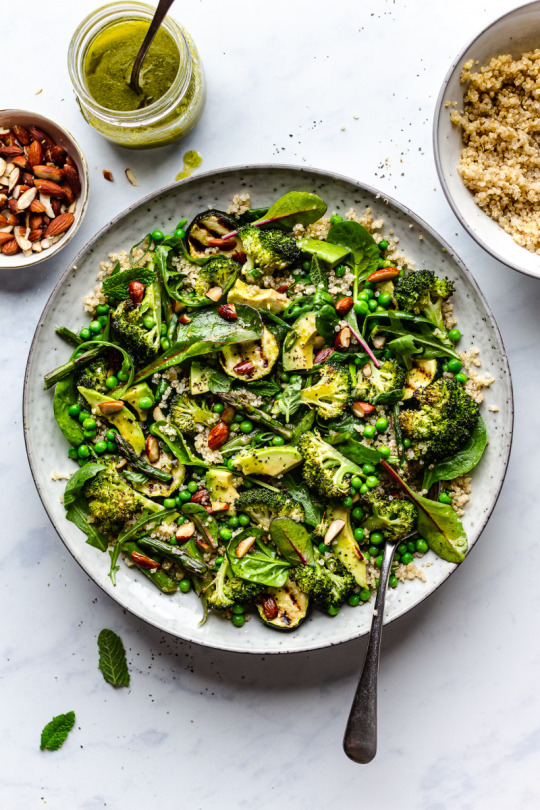
Green Vegan Salad (Gluten-Free)
#vegan#gluten free#lunch#dinner#salad#rice bowl#quinoa#broccoli#asparagus#green peas#zucchini#arugula#spinach#swiss chard#mint#almonds#avocado#green onion#basil#lemon#garlic#olive oil#black pepper#sea salt#💚
17 notes
·
View notes
Text
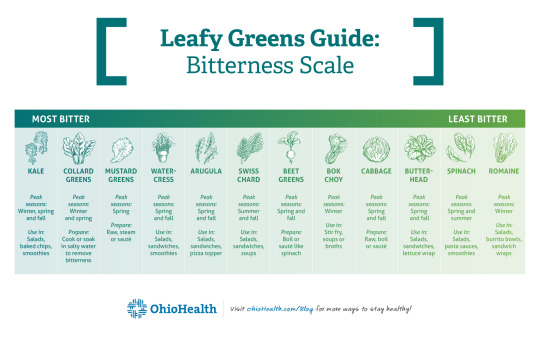
#g#leafy greens#herbarium#holistic health#holistic healing#nutritarian#nutrition#herbalism#gastronomy#good eats#kale#collard greens#lettuce#arugula#swiss chard#cabbage#spinach#watercress#bok choy#seasonal eating#se: spring#se: autumn#se: summer#GBOMBS
79 notes
·
View notes
Text
Thought I'd throw up some pics of the cold frame I slapped together on my south-facing front porch.
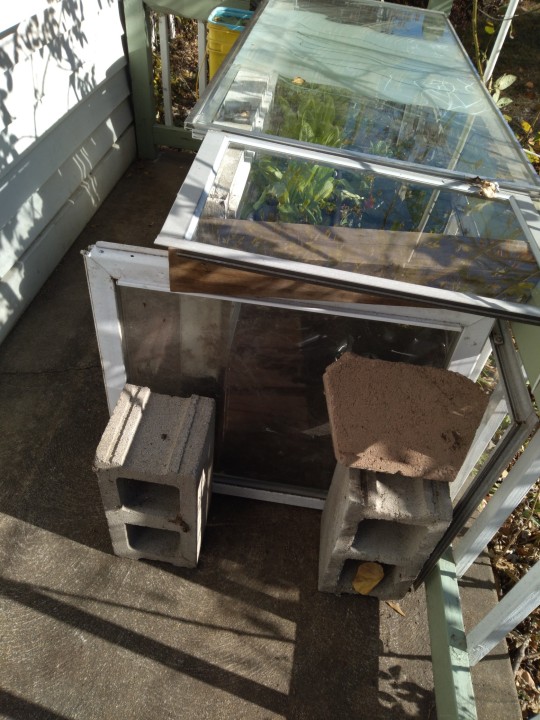
It's mostly made from windows I scavenged this year. There's a bank of them snugged up against the front railing, there are ones on each side held in place with cinder blocks, and the one in back is resting on what I'm using for thermal mass.
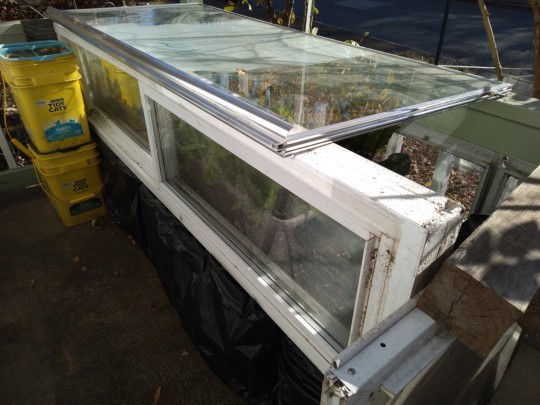
It's a row of those Tidy Cats litter tubs filled 3/4 up with water and stuffed into black plastic contractor bags. The plastic bags not only help with the absorption of solar heat, but also fill in the spaces between the tubs. They're only filled 3/4 full because they're inevitably going to freeze at some point--some will crack at the bottom seam but most will make it. I do have plans to go out this weekend on a Styrofoam panel scavenging mission--you know, after people blow all their money on new tvs and stuff on black friday and throw the packaging away. Then I'll insulate the back of the thermal shelf to direct the heat all inward.
The top is just a shower door plus a small window. I can shift/lift them for harvesting and watering.
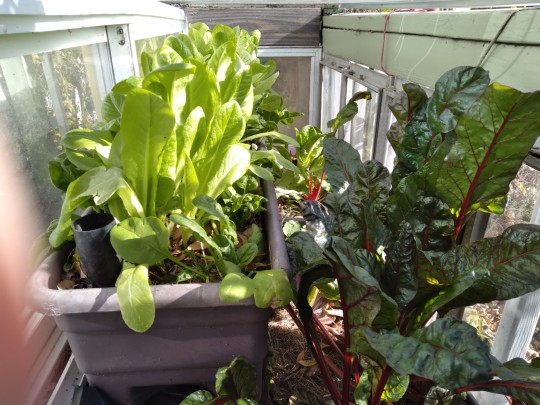
I've got two regular sized Earthboxes and two smaller in there. The smaller ones are on the ledge and the larger are on the concrete. I've got several lettuces, several spinaches, Swiss chard, and some teeny kale seedlings going. The kale is teeny because the @#@^=$_!! midnight wildlife tore apart the initial transplants when I first planted them in the boxes back in September and I had to restart from seed.
It took me a solid month to work up the energy to put this all together, but only an hour or two to construct. Thankfully, autumn seems to be on a one month delay this year except for one or two short dips below freezing. Looking forward to at least a weekly salad for as long as we don't have another "arctic blast" like we did last year.
#cold frames#they can be as simple and janky as this one and still work to extend your growing season#i'm going to try to get my hands on some more lumber this next year so i can build panels i can just snap together#but this year all the lumber went to the new chicken coop/run and rebuilding the rotting back stairs that i kept slipping and falling on#gardening#extending the growing season#lettuce#spinach#kale#swiss chard#i ran out of room or the green onions would also be out there#instead they're in a basement window
4 notes
·
View notes
Text
Here's all of the baby plants I found in the garden in early March:
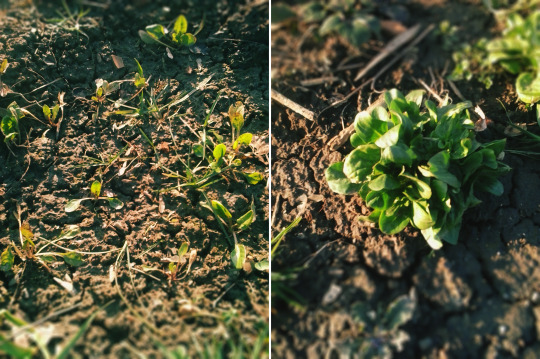
Tiny baby swiss chard planted in the fall, it should start growing properly when it gets warm. Spinach already seems super ready to grow.
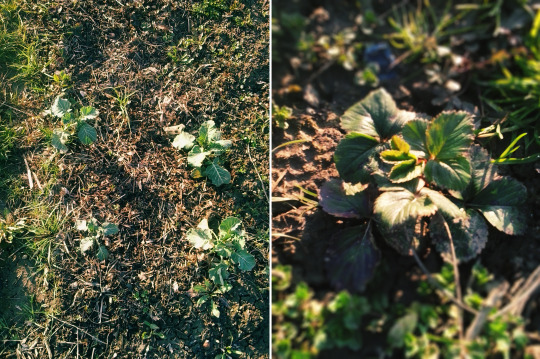
These are broccoli, they haven't gotten established properly, so I doubt I'll be able to harvest anything, I planted them way too late in the fall. I'll try them again next year. Strawberries, on the other hand, have started growing new leaves and getting ready for the spring!
I've also found some onions, garlic, leek and chives growing, and some small but very pretty cabbages!
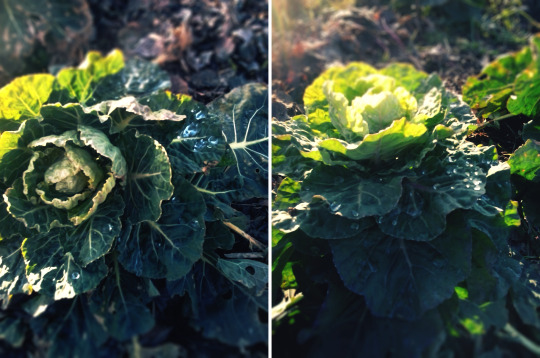

I doubt they will manage to form a head, but I can just eat them as they are and be pleased because they're fresh and tasty. I'll let them grow for a bit longer. I just need to harvest them before it gets warm because they will try to go to seed.
#baby plants#winter plants#early spring gardening#garden photography#nature#gardening#growing food#cabbages#spinach#swiss chard#cabbage savoy#strawberries#broccoli#i also found horseradish and black turnip#but they're underground so i couldn't take pictures
17 notes
·
View notes
Text
2023 garden update
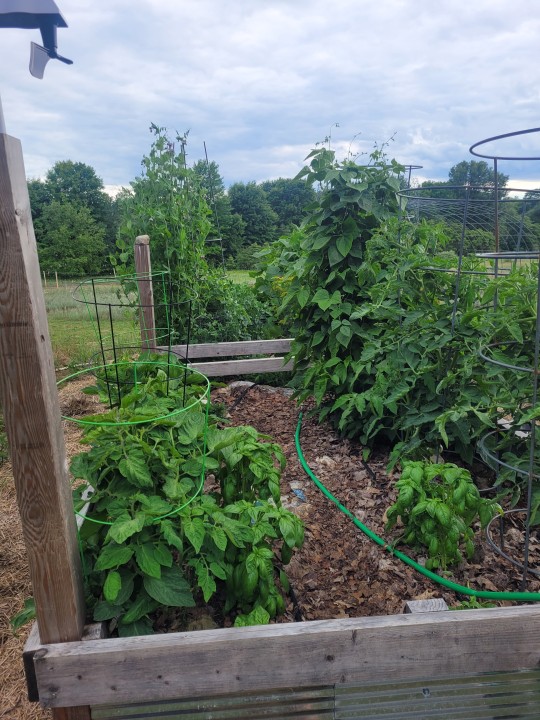

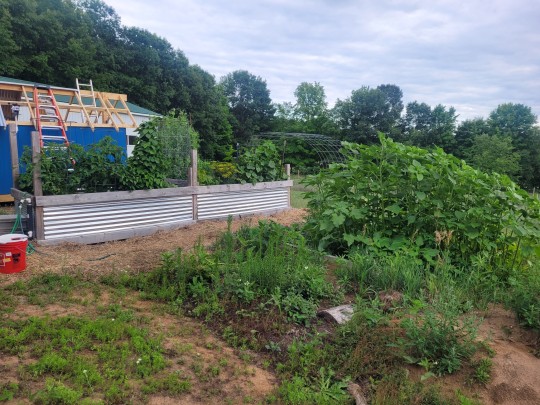
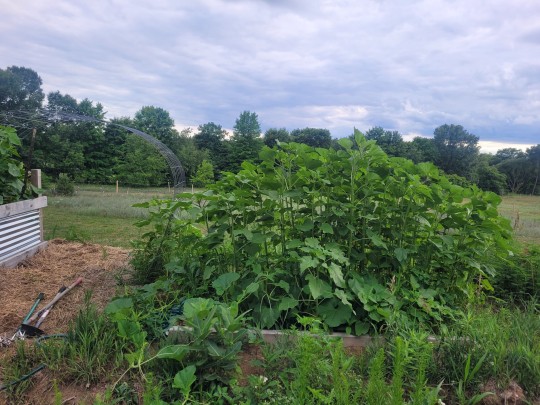
Somethings going right, at least.
The heavy mulch is working a treat! Very minimal weeding in the big bed. (Some grass is growing, but it's not bad). We've had some very hot days that would normally make the plants sad and it seems the mulch has also kept the roots happy and cool, so the plants have been happy.
We do have squash bugs this year, but I've been cutting out the eggs when I find them and stuffing them (and their parents when I can) into a bucket with a lid. It has definitely been making a difference. Grasshoppers, locust, and aphids have been an issue on a few plants, but they were planted deliberately to take those pests away from others. So far so good.
#homestead#farm#gardening#weve harvested peas basil dill Zucchini bok choy spinach and swiss chard already#i have baby cucumbers growing#very happy with it
6 notes
·
View notes
Text

The Swiss Chard is so eye catching that you sometimes see them among ornamental flowers in garden borders, but they really belong in the vegetable garden. Our kitchen garden has its own display of multicoloured Swiss Chard (Beta vulgaris). Many of our familiar leafy greens all belong to this single species despite their diverse tastes and physical appearances. Swiss Chard, Beetroot, Perpetual Spinach, Sugar Beet, and Manglewurzel (a leaf and root crop grown as animal feed) are all Beta vulgaris. The wild ancestor of all these useful plants is the Sea Beet (Beta vulgaris subspecies maritima), a plant that grows at the seaside all over Europe and Western Asia. The Sea Beet had been domesticated and bred for leaf-bearing or root-bearing cultivars by the time of the Ancient Egyptians. The jewel-like colours of beet roots and chard stems comes from Betalain pigments instead of anthocyanins. Medical studies have shown that these natural phytonutrient pigments have anti inflammatory and antioxidant properties when consumed. These plants not only brighten up your plate and garden, but also light the path to better health!
#swiss chard#red beets#sugar beet#spinach#anthocyanin#pigments#edible plants#katia plant scientist#plant science#plant scientist#plant biology#plants#plant aesthetic#plantblr#kitchen garden#vegetables#fruits and vegetables#grow your own food#leafy greens#healthy food#botany#colorful#red and green#phytonutrients
13 notes
·
View notes
Text
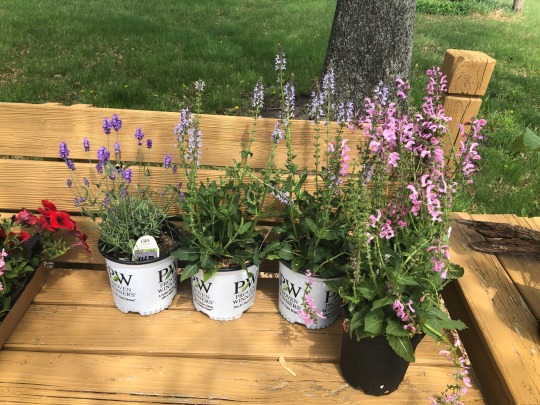



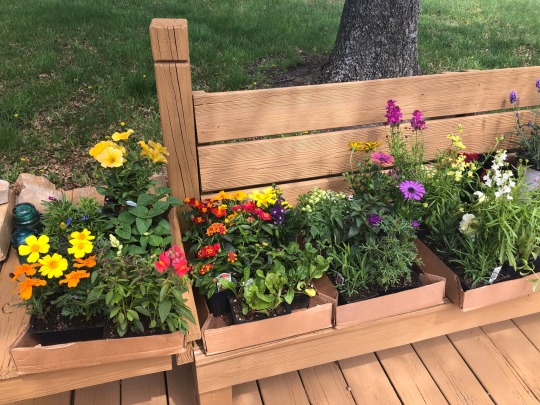
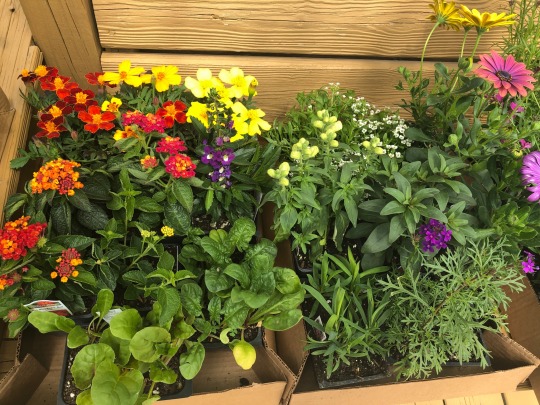


Oh and we went to get some flowers yesterday! So beautiful! We also got some lavender that’s not pictured (well besides the one with the bumble bee on it)
3 notes
·
View notes
Text
I had my last day at the farm on Friday and I ended up crying about it when I said all my goodbyes and was the last one in the barn. I'll definitely be back for one reason or another but still. Here are some shots of the last day 💜








#trans girl#transgender#trans woman#wlw#trans lesbian#lesbian#non binary lesbian#farm girl#farm gal#organic farm#organic farming#swiss chard#spinach#F-150#1980s F-150#barn#virginia
15 notes
·
View notes
Text

Vegan savoury tart with cashews and spring greens
#tarts#swiss chard#spinach#leeks#onions#fair trade cashews#no butter pastry recipe#olive oil#spelt flour#sorghum flour
0 notes
Text


Starting my crops is going well…gamers take note
#botany#growlights#carrots#tomatoes#begonia#radish#spinach#marigold#chard#Swiss chard#gardening#cucumber#cantaloupe#onion
5 notes
·
View notes
Text
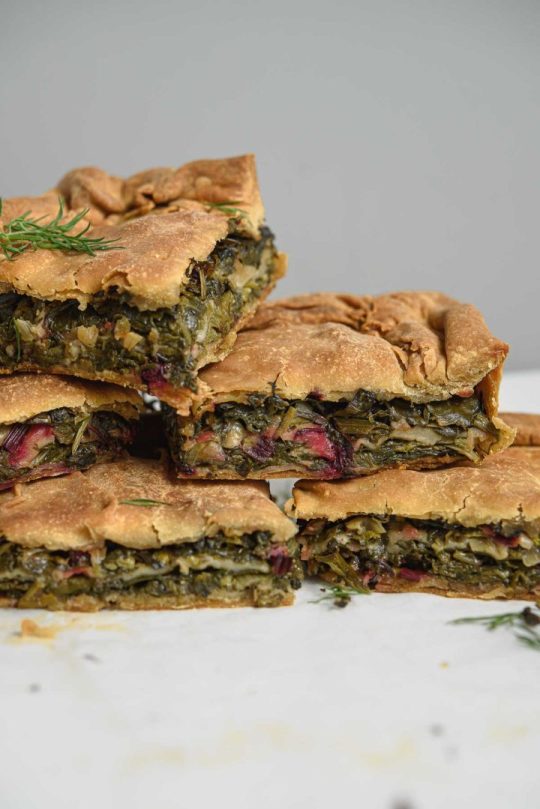
Authentic Greek Hortopita / Wild Greens Pie (Vegan)
#vegan#lunch#dinner#hortopita#pastry#greek cuisine#mediterranean cuisine#spinach#swiss chard#stinging nettles#beet greens#mallow#wild greens#wild food#phyllo#chervil#dill#green onion#leeks#red onion#vinegar#olive oil#sea salt#💚
111 notes
·
View notes
Text
Gardening 101~ How to properly harvest, lettuce, spinach, Swiss chard, kale, and all other salad greens
Have you ever wondered why your lettuce or other salad greens don’t come back after you harvest them? Or why when you cut them up you get those yucky looking rust spots on the produce? Well, you are not the only one wondering friends, & there is a very simple answer.
To learn the answers, watch my YouTube video on how to properly harvest salad greens from your garden including lettuce, Swiss,…

View On WordPress
#cooking#garden design#Gardening#how do I harvest kale?#how do I harvest my lettuce so it will come back?#how do I harvest spinach?#how do I harvest swiss chard?#How do I make my salad crops cut and come again?#how to harvest lettuce#organic gardening#Recipes#what should I use to harvest my lettuce?#why do I have rust spots on my lettuce?
0 notes
Text
Superfoods you should incorporate in your diet:
Superfoods are nutrient-dense foods that are considered beneficial for your health due to their high concentration of vitamins, minerals, antioxidants, and other beneficial compounds.
Combine these superfoods with a variety of other whole foods to ensure you're getting a wide range of nutrients. Also, be mindful of portion sizes and any individual dietary restrictions or allergies you may have.
Berries: Blueberries, strawberries, raspberries, and other berries are rich in antioxidants, fiber, and vitamins.
Leafy greens: Spinach, kale, Swiss chard, and other leafy greens are packed with vitamins, minerals, and fiber. They are low in calories and provide important nutrients like vitamin K, vitamin C, and folate.
Cruciferous vegetables: Broccoli, cauliflower, Brussels sprouts, and cabbage are part of the cruciferous vegetable family. They contain compounds that may help reduce the risk of certain cancers.
Nuts and seeds: Almonds, walnuts, chia seeds, flaxseeds, and hemp seeds are excellent sources of healthy fats, protein, fiber, and various vitamins and minerals.
Fish: Fatty fish like salmon, sardines, and mackerel are rich in omega-3 fatty acids, which are beneficial for heart health and brain function.
Whole grains: Quinoa, brown rice, oats, and whole wheat are examples of whole grains that provide fiber, vitamins, and minerals.
Legumes: Beans, lentils, chickpeas, and other legumes are high in fiber, protein, and various nutrients. They are also a good source of plant-based protein.
Turmeric: This spice contains curcumin, a compound with potent anti-inflammatory and antioxidant properties.
Green tea: Green tea is rich in antioxidants called catechins and is believed to have various health benefits, including improved brain function and a lower risk of certain diseases.
Dark chocolate: Dark chocolate with a high cocoa content (70% or higher) is a source of antioxidants and may have positive effects on heart health and mood.
Avocado: Avocados are rich in healthy fats, fiber, and various vitamins and minerals. They also provide a good source of potassium.
Greek yogurt: Greek yogurt is a protein-rich food that also contains beneficial probiotics, calcium, and vitamin B12.
Sweet potatoes: Sweet potatoes are packed with vitamins, minerals, and fiber. They are an excellent source of beta-carotene, which is converted into vitamin A in the body.
Garlic: Garlic contains sulfur compounds that have been associated with potential health benefits, including immune support and cardiovascular health.
Ginger: Ginger has anti-inflammatory properties and is commonly used to aid digestion and relieve nausea.
Seaweed: Seaweed, such as nori, kelp, and spirulina, is a rich source of minerals like iodine, as well as antioxidants and omega-3 fatty acids.
Pomegranate: Pomegranates are packed with antioxidants and are believed to have anti-inflammatory properties. They are also a good source of vitamin C and fiber.
Cacao: Raw cacao is the purest form of chocolate and is rich in antioxidants, flavonoids, and minerals. It can be enjoyed as nibs, powder, or in dark chocolate form.
Quinoa: Quinoa is a gluten-free grain that provides a complete source of protein, along with fiber, vitamins, and minerals.
Extra virgin olive oil: Olive oil is a healthy fat option, particularly extra virgin olive oil, which is high in monounsaturated fats and antioxidants.
Chia seeds: Chia seeds are a great source of fiber, omega-3 fatty acids, and antioxidants. They can be added to smoothies, yogurt, or used as an egg substitute in recipes.
Beets: Beets are rich in antioxidants and are known for their vibrant color. They also contain nitrates, which have been shown to have beneficial effects on blood pressure and exercise performance.
Matcha: Matcha is a powdered form of green tea and is known for its high concentration of antioxidants. It provides a calm energy boost and can be enjoyed as a tea or added to smoothies and baked goods.
Algae: Algae, such as spirulina and chlorella, are nutrient-dense foods that are rich in protein, vitamins, minerals, and antioxidants. They are often consumed in powdered or supplement form.
Fermented foods: Fermented foods like sauerkraut, kimchi, kefir, and kombucha are rich in beneficial probiotics that support gut health and digestion.
Maca: Maca is a root vegetable native to the Andes and is often consumed in powdered form. It is known for its potential hormone-balancing properties and is commonly used as an adaptogen.
Goji berries: Goji berries are small red berries that are rich in antioxidants, vitamins, and minerals. They can be enjoyed as a snack or added to smoothies and oatmeal.
Hemp seeds: Hemp seeds are a great source of plant-based protein, healthy fats, and minerals like magnesium and iron. They can be sprinkled on salads, yogurt, or blended into smoothies.
Moringa: Moringa is a nutrient-dense plant that is rich in vitamins, minerals, and antioxidants. It is often consumed as a powder or used in tea.
Mushrooms: Certain mushrooms, such as shiitake, reishi, and maitake, have immune-boosting properties and are rich in antioxidants. They can be cooked and added to various dishes.
#health tips#healthy lifestyle#health and wellness#nutrients#healthy life tips#healthy life hacks#healthy diet#level up journey#high value mindset#health is wealth#levelupjourney#glow up tips#glow up#nutrition#healthy living
2K notes
·
View notes